In the meadows and along the roadsides, where the sun’s rays paint the landscape in golden hues, the Mullein flowers (Verbascum spp.) stand tall, offering their beauty and medicinal properties to the world. With their towering spires and soft, velvety leaves, these unique flowers have captured the attention of botanists, herbalists, and nature lovers for centuries. In this article, we will explore the enchanting world of Mullein flowers, uncovering their appearance, characteristics, uses, and their role as guardians of the natural environment.
Mullein flower images
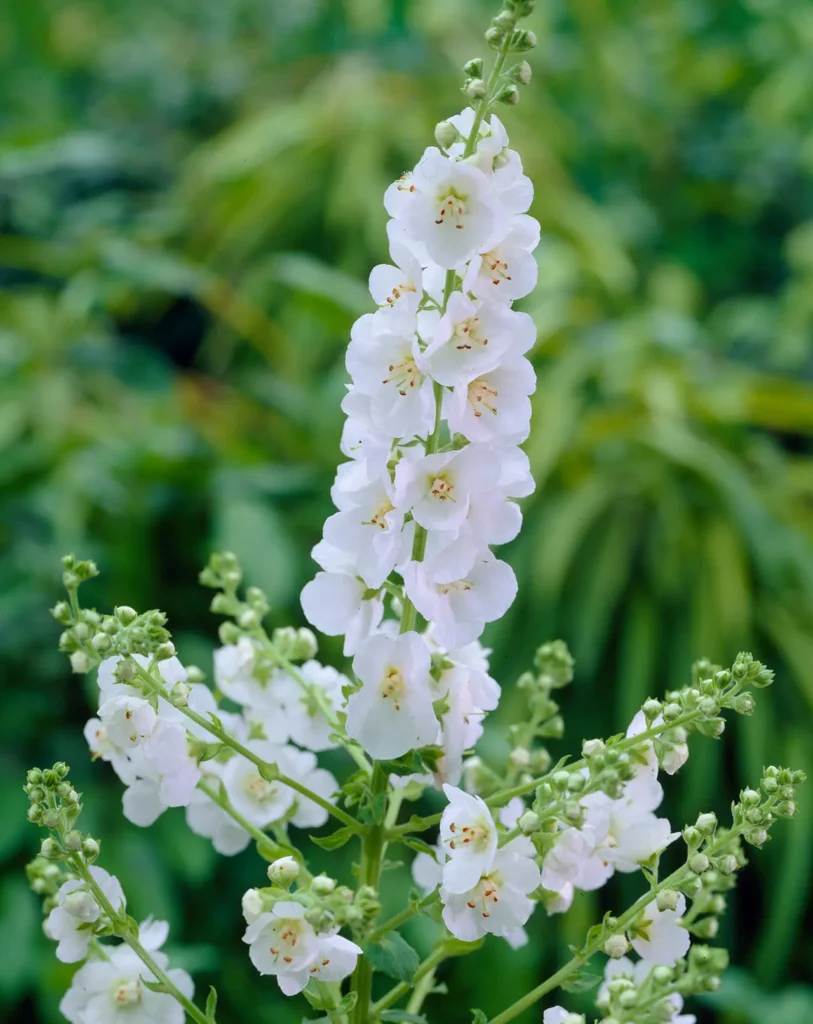
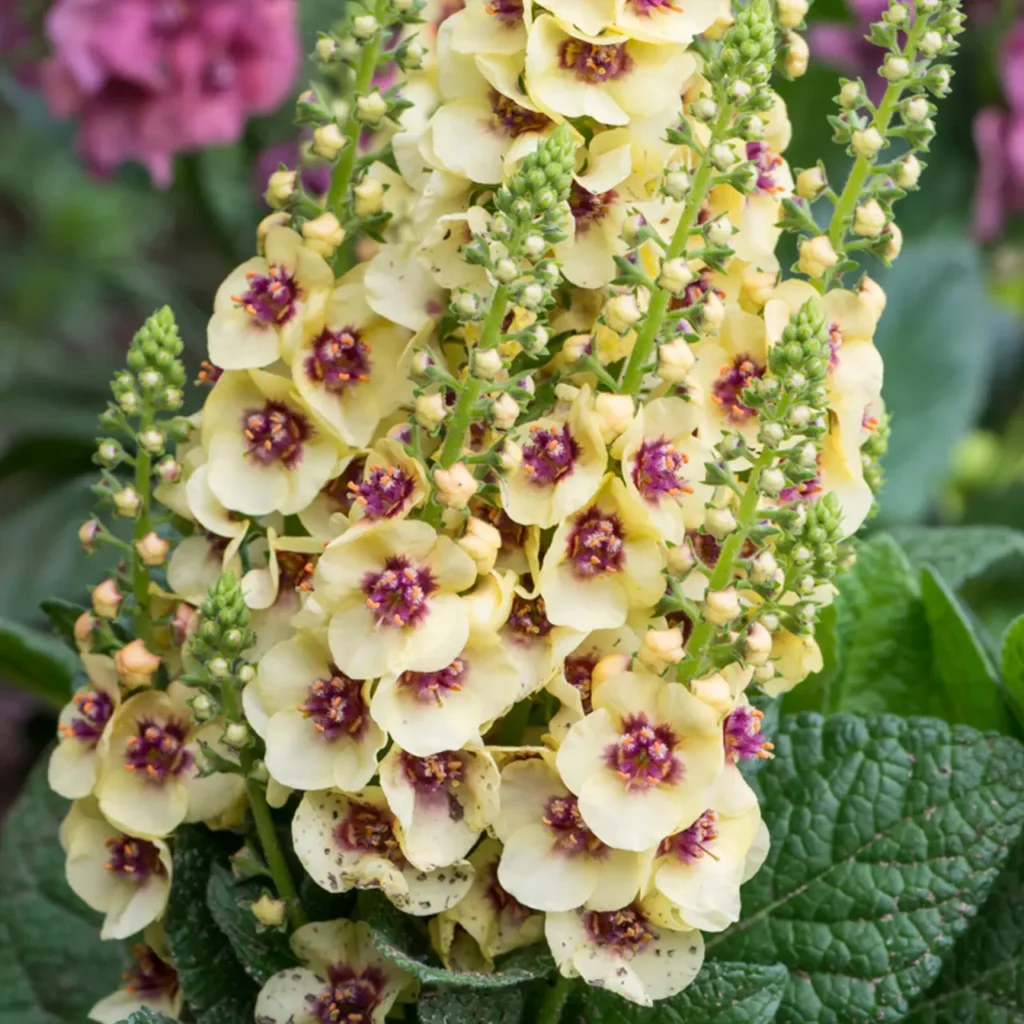
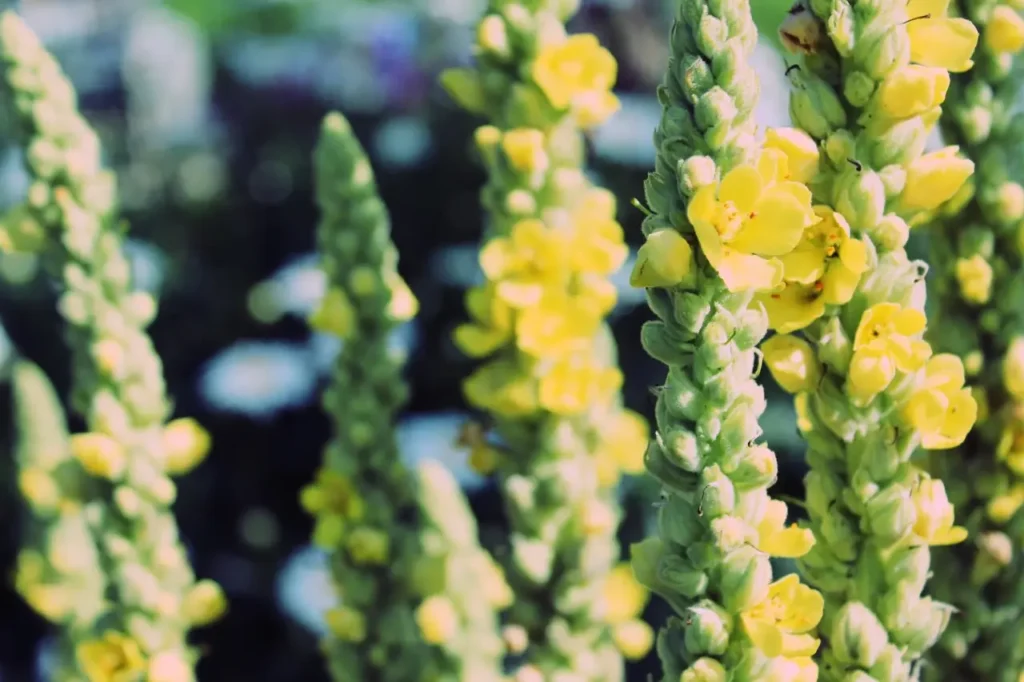
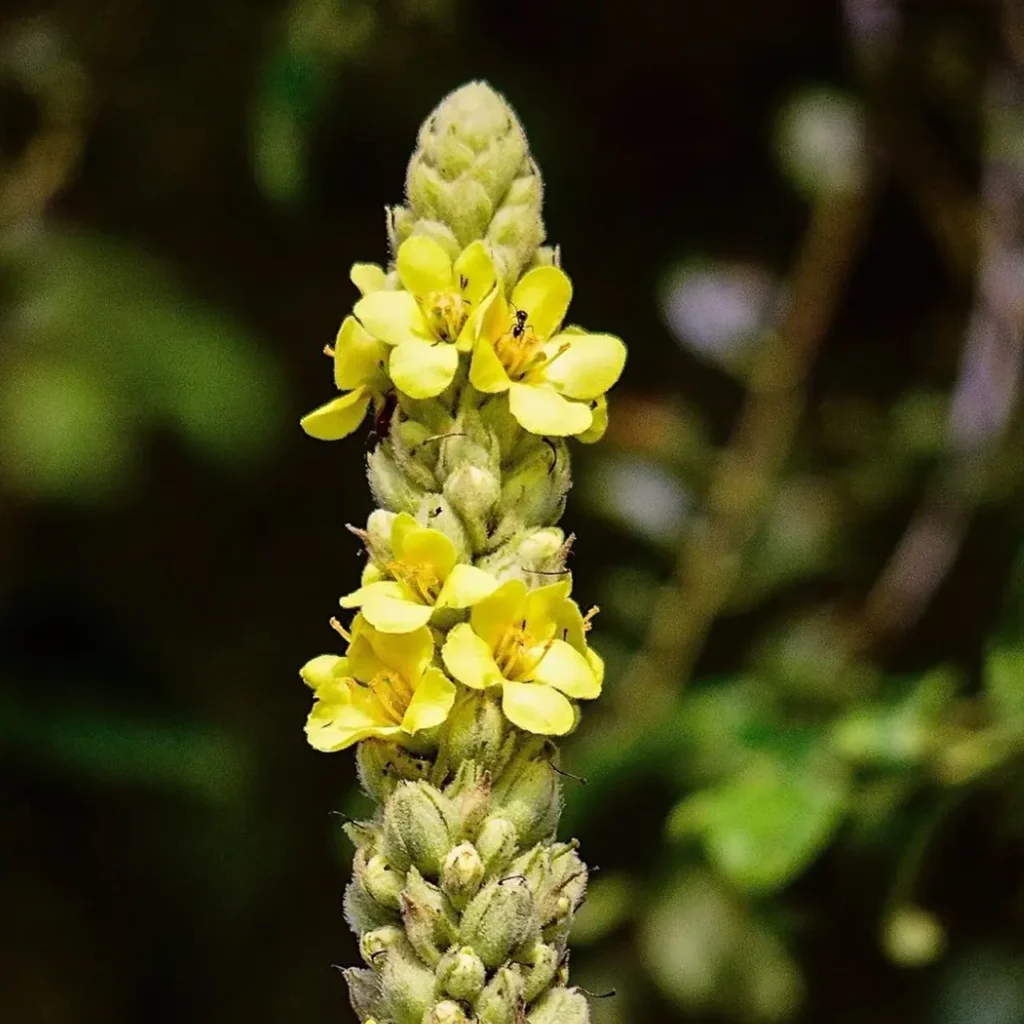
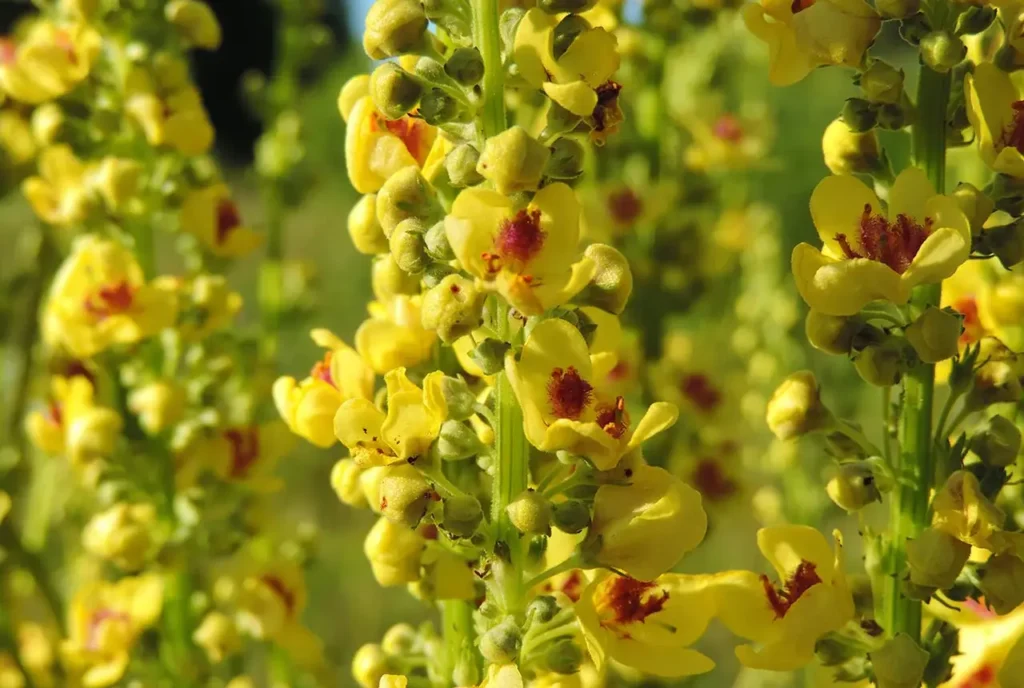
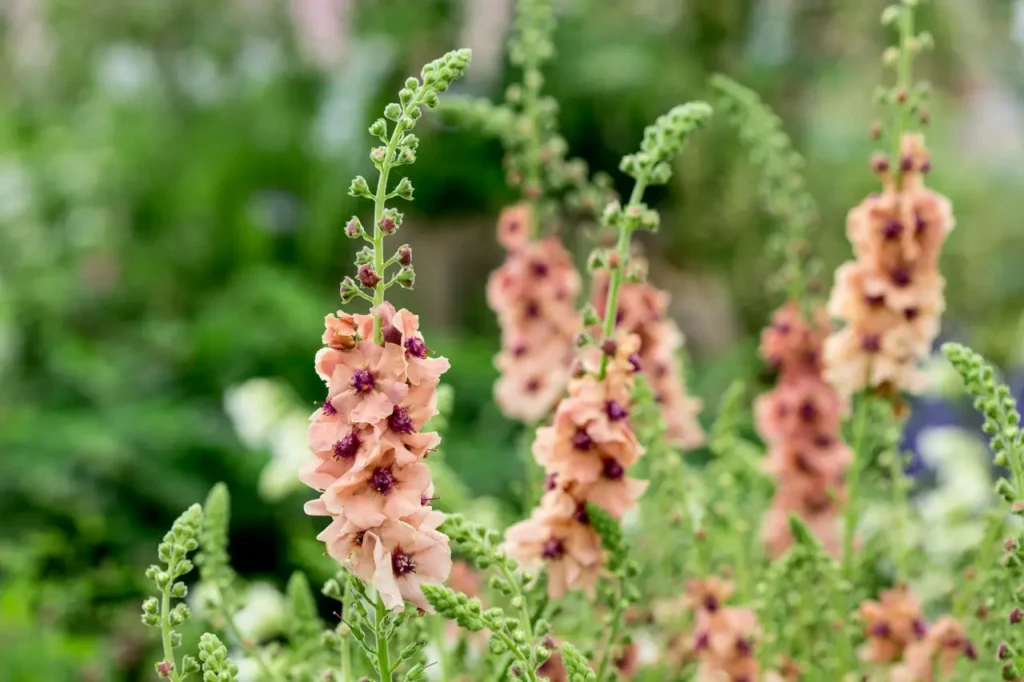
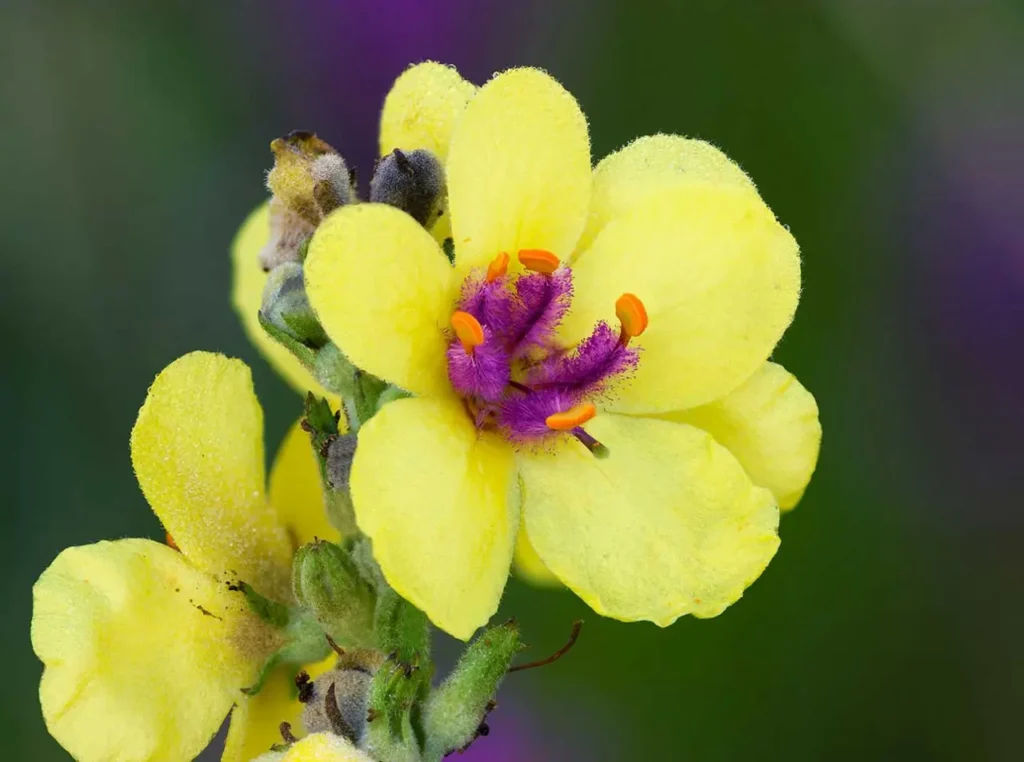
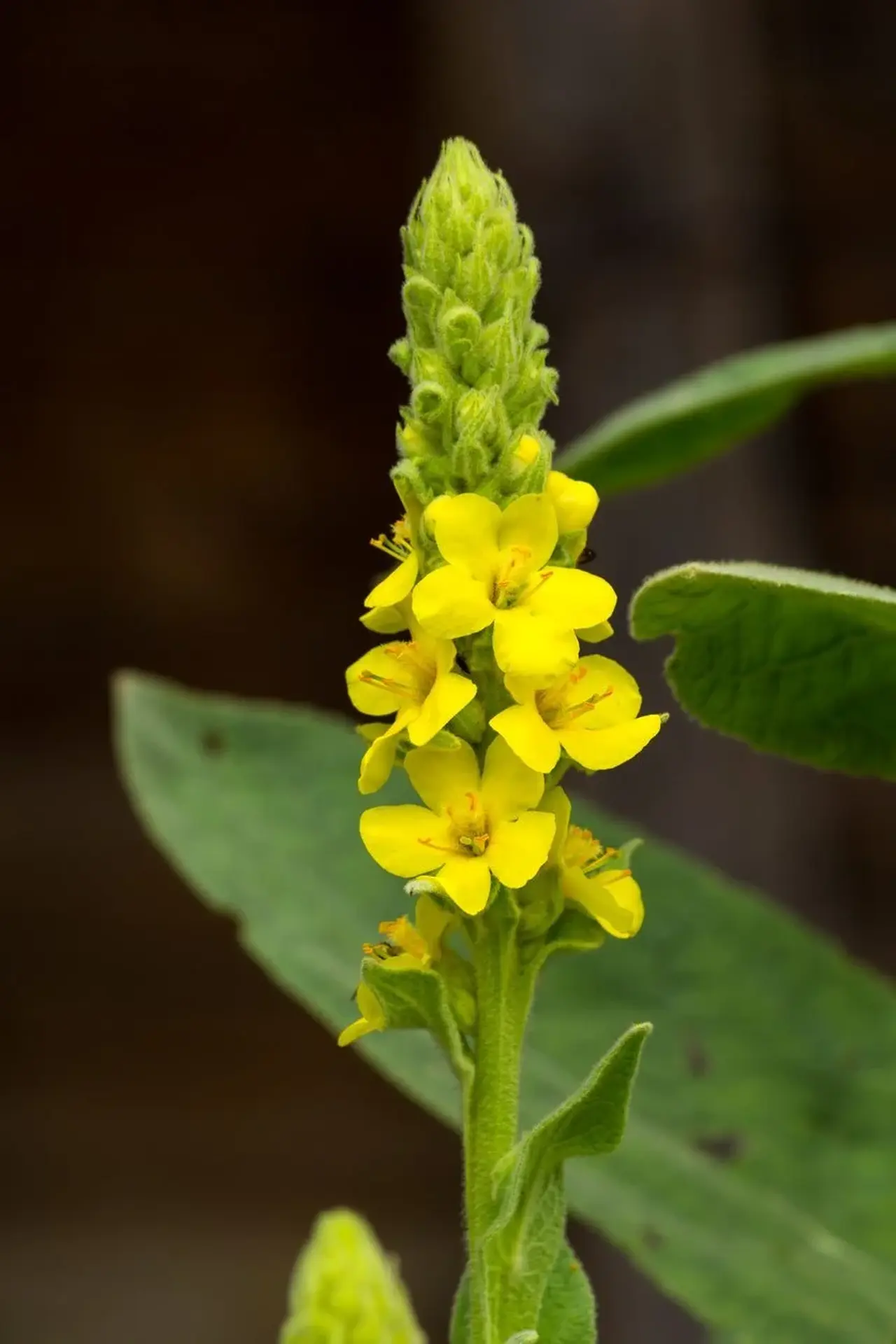
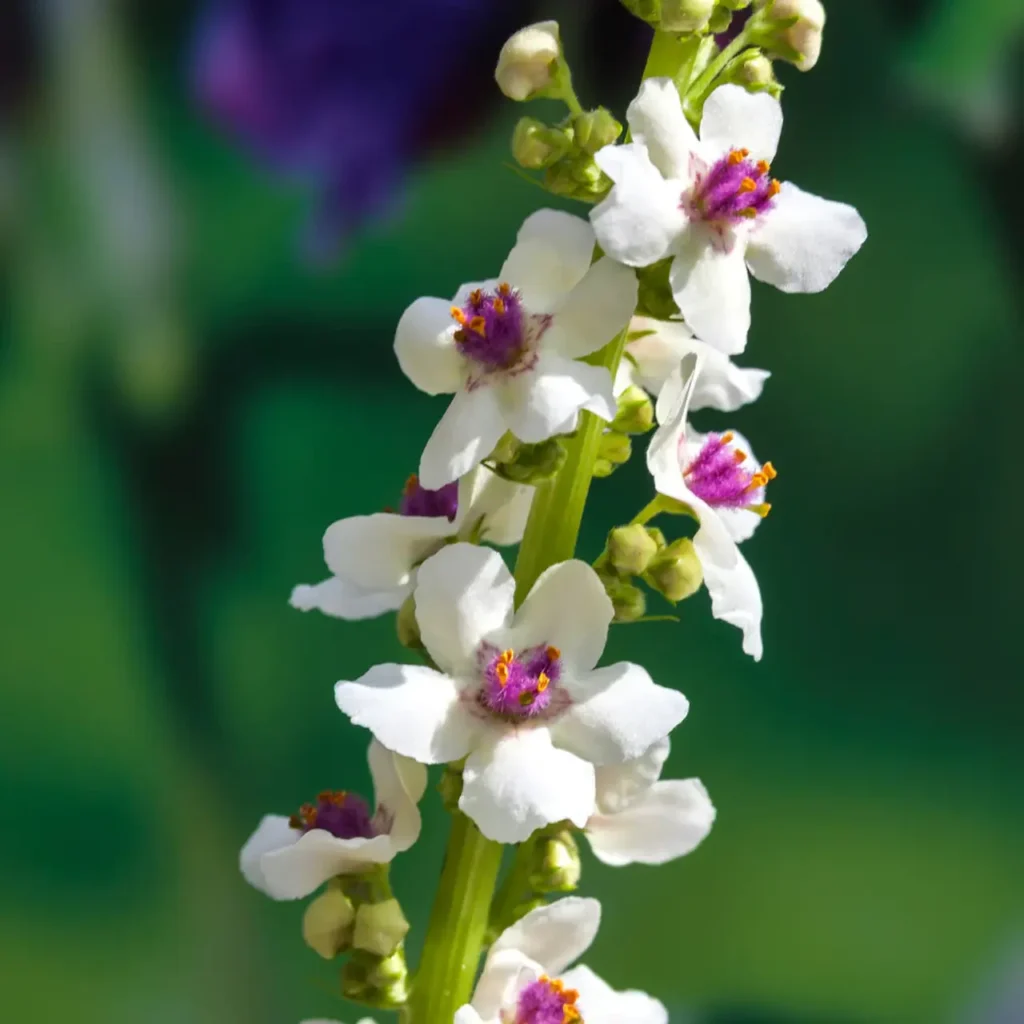
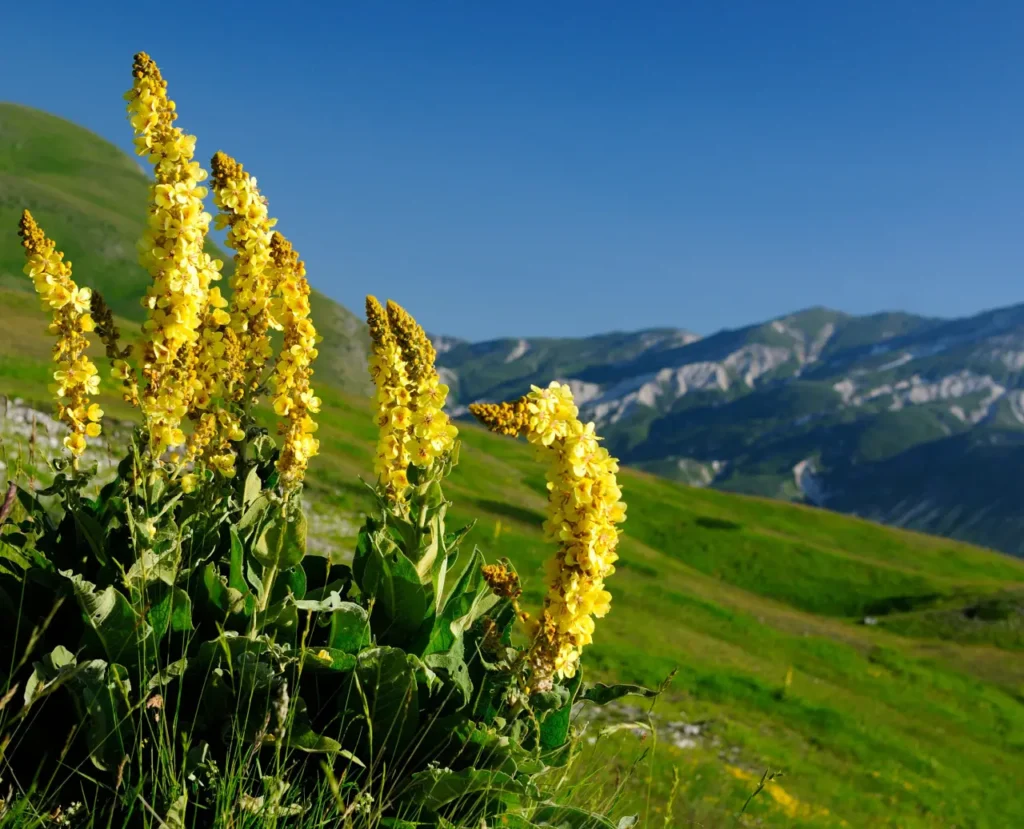
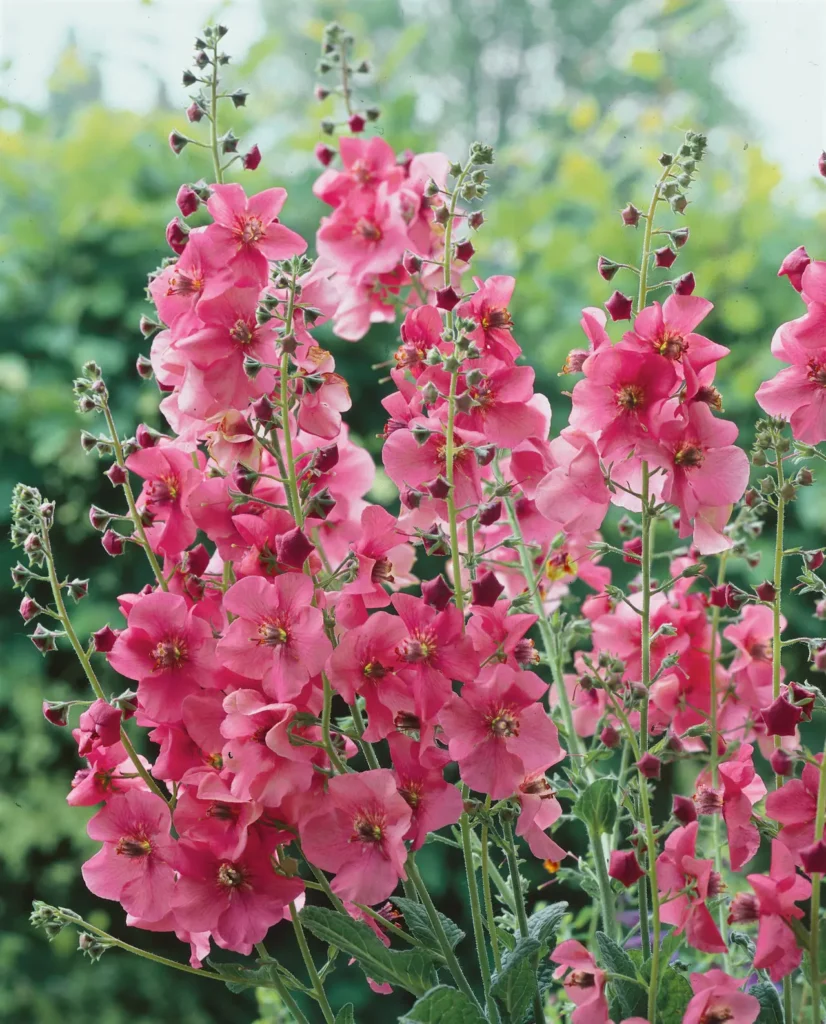
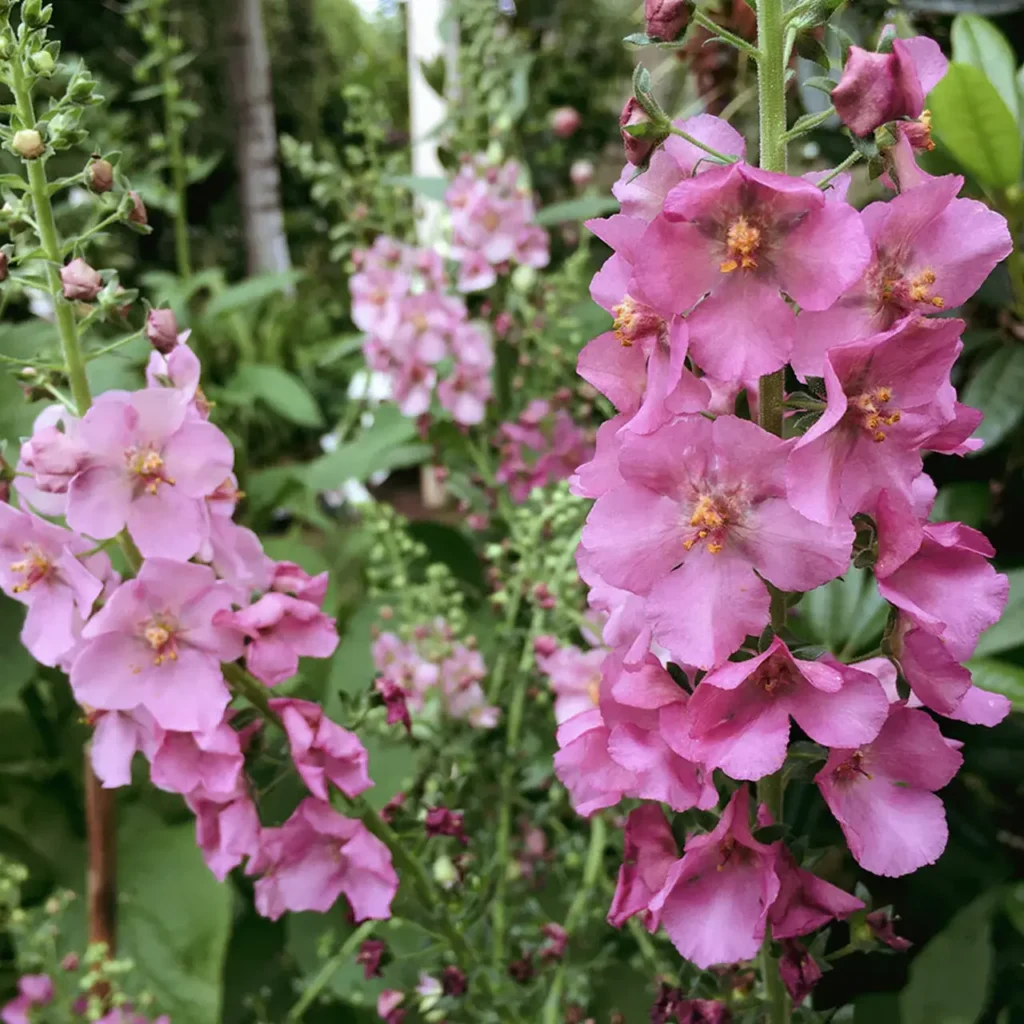
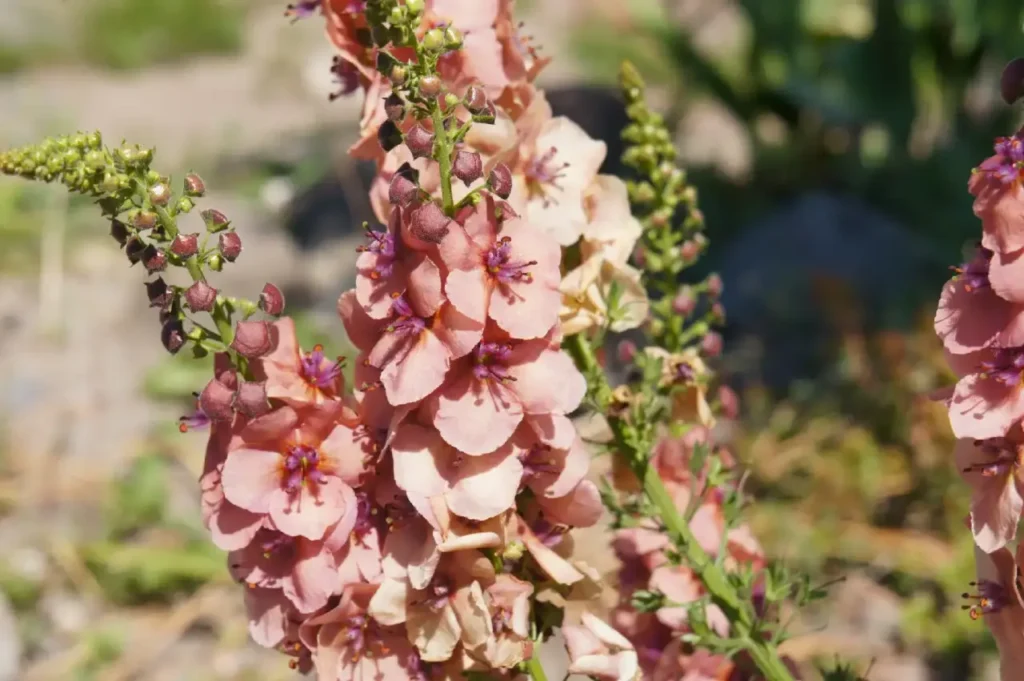
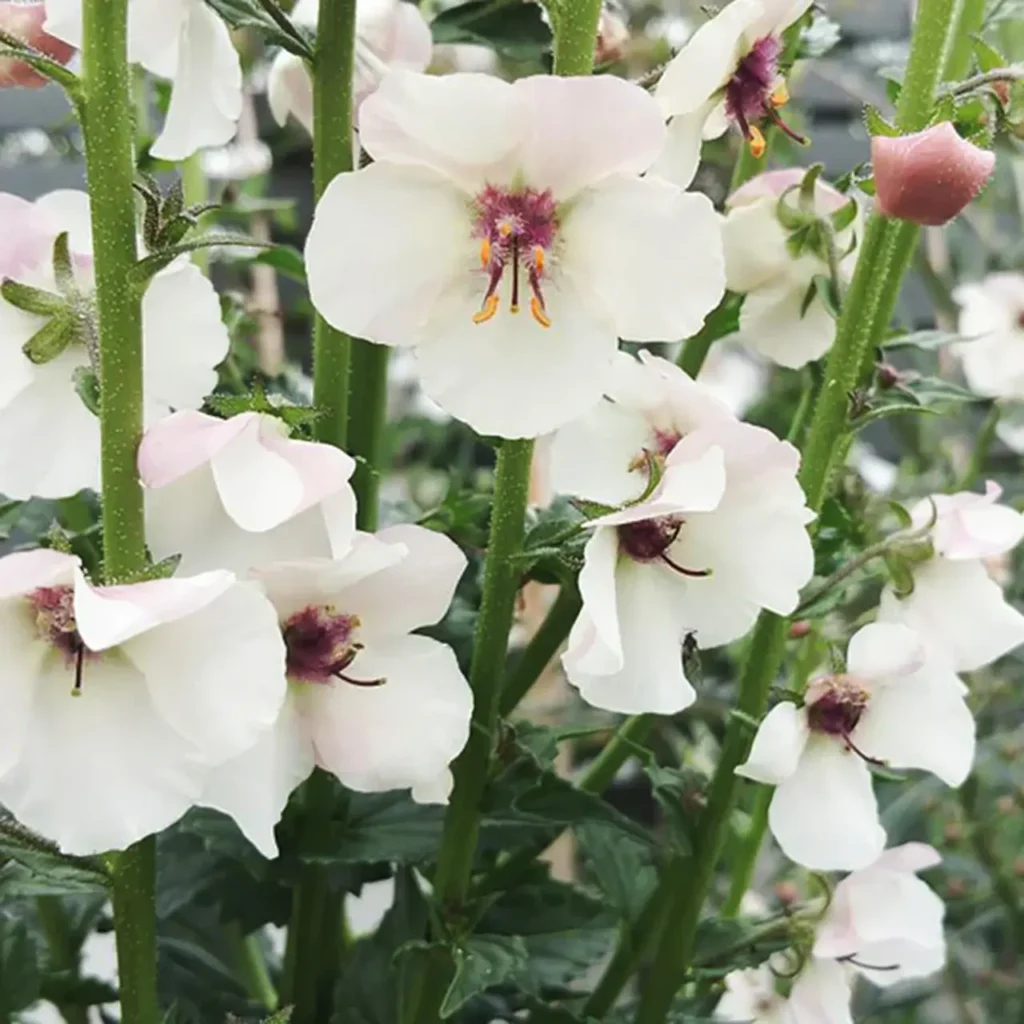
Appearance and Characteristics
Mullein flowers are known for their distinctive appearance and towering presence. The plants can reach impressive heights, ranging from 1 to 2 meters (3 to 6 feet) tall. The central stalk is adorned with large, oval-shaped leaves covered in a soft, downy layer of fine hairs, giving the plant a velvety texture. Atop the sturdy stem, numerous bright yellow flowers bloom in a dense spike, creating a striking visual display. The flowers have five petals with intricate patterns, and their vibrant yellow color serves as a beacon to pollinators.
The color of the Mullein flowers
The color of Mullein flowers can vary depending on the specific species and variety. Mullein (Verbascum) is a genus of flowering plants that includes several different species, each with its own unique flower colors. Here are some common colors of Mullein flowers:
- Yellow: Yellow is a prevalent color in Mullein flowers. Many species, including Verbascum thapsus (Common Mullein) and Verbascum olympicum (Olympic Mullein), produce vibrant yellow blooms. The shade of yellow can range from pale and buttery to bright and golden.
- White: White is another color seen in Mullein flowers. Species such as Verbascum chaixii (Nettle-leaved Mullein) and Verbascum bombyciferum (Silky Mullein) can have white blooms. The white flowers often have beautiful contrasting markings or spots, adding to their visual appeal.
- Purple: Some Mullein species, like Verbascum phoeniceum (Purple Mullein) and Verbascum nigrum (Dark Mullein), display purple flowers. The shades of purple can vary from light and delicate to deep and rich hues.
- Pink: Pink is a less common but still observed color in Mullein flowers. Species such as Verbascum blattaria (Moth Mullein) and Verbascum chaixii ‘Album’ (White Mullein) produce pinkish blooms. The pink flowers can range from soft and pastel to more intense and vibrant shades.
It’s important to note that the exact flower colors can differ within species and can be influenced by factors such as environmental conditions and individual plant genetics. The tall, erect flower spikes of Mullein with their diverse colors make them a visually appealing addition to gardens and natural landscapes.
Habitat and Distribution
Mullein flowers are native to Europe and parts of Asia, but they have been naturalized in many regions across the globe. They are commonly found in dry and open habitats, such as meadows, fields, roadsides, and disturbed areas. Mullein has a remarkable ability to thrive in poor soil conditions and is often associated with areas that have been disturbed by human activity or natural processes.
Historical and Medicinal Uses
Throughout history, Mullein flowers have been highly valued for their medicinal properties. The leaves and flowers of the plant are known for their mucilaginous and soothing qualities, making them a popular choice for treating respiratory ailments such as coughs, congestion, and bronchitis. Mullein tea, made by infusing the dried flowers and leaves in hot water, is often used as a natural remedy for respiratory discomfort. The flowers have also been used externally in poultices and oils to alleviate skin irritations and promote healing.
Environmental Guardians
Mullein flowers play an essential role as guardians of the environment. Their towering presence and long-lasting blooms provide valuable habitats and food sources for a variety of insects, including bees, butterflies, and moths. These pollinators are crucial for the reproductive success of many plant species, making Mullein an important contributor to the overall biodiversity and ecological balance of the surrounding ecosystem.
Conservation and Cultivation
Due to their hardiness and adaptability, Mullein flowers are not considered endangered or threatened. However, as with all plant species, responsible cultivation and conservation practices are essential to preserve their natural habitats. Mullein can be easily grown from seeds in gardens and is often cultivated for its ornamental value and medicinal properties. Collecting seeds responsibly and avoiding the introduction of invasive species are important considerations for maintaining the ecological integrity of natural habitats.
Mullein flowers, with their towering spires, velvety leaves, and vibrant yellow blooms, offer both visual delight and medicinal benefits. They stand as guardians of the environment, providing shelter and nourishment to pollinators and contributing to the delicate balance of ecosystems. As we appreciate the beauty and healing properties of Mullein flowers, let us also embrace our role as stewards of the natural world, ensuring their continued presence and the preservation of their habitats for generations to come.







